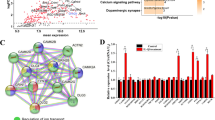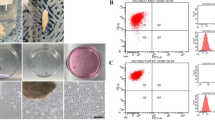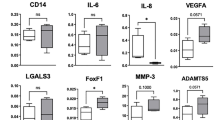Abstract
It is well known that the mitogen-activated protein kinase (MAPK) signal transduction pathways is involved in the regulation of inducible nitric oxide synthase (iNOS) in many cellular systems. However, sufficient information describing the role of MAPKs on iNOS expression in rat Schwann cells (SCs) is lacking. Therefore the paper was sought to investigate the role of MAPK cascades in iNOS expression following treatment of lipopolysaccharide (LPS) in a rat Schwann cell line RSC 96. Reverse transcriptase-PCR analysis (RT-PCR) and immunocytochemical staining were performed to detect iNOS expression following LPS induction. Next RT-PCR and Western blot analysis were employed to study expression of iNOS after using inhibitors selective for ERK (PD98059), JNK/SAPK (SP600125) and p38 (SB202190). The production of nitric oxide (NO) was measured by nitrate reductase method. LPS could significantly induce the expression of iNOS located in the cytoplasm in RSC 96 with a concentration- and time-dependent manner. Administration of inhibitors individually and combinations of the three inhibitors at micromolar concentrations suppressed the expression of iNOS and the production of NO. Based on these observations, it is proposed that LPS may activate the rat Schwann cell line RSC 96 to express iNOS and release NO via the MAPK signal transduction pathways.







Similar content being viewed by others
References
Bhatheja K, Field J (2006) Schwann cells: origins and role in axonal maintenance and regeneration. Int J Biochem Cell Biol 38:1995–1999. doi:10.1016/j.biocel.2006.05.007
Stoll G, Jander S, Myers RR (2002) Degeneration and regeneration of the peripheral nervous system: from Augustus Waller’s observations to neuroinflammation. J Peripher Nerv Syst 7:13–27. doi:10.1046/j.1529-8027.2002.02002.x
Tofaris GK, Patterson PH, Jessen KR et al (2002) Denervated Schwann cells attract macrophages by secretion of leukemia inhibitory factor (LIF) and monocyte chemoattractant protein-1 in a process regulated by interleukin-6 and LIF. J Neurosci 22:6696–6703
Wagner R, Myers RR (1996) Schwann cells produce tumor necrosis factor-alpha: expression in injured and non-injured nerves. J Neurosci 73:625–629. doi:10.1016/0306-4522(96)00127-3
Levy D, Hoke A, Zochodne DW (1999) Local expression of inducible nitric oxide synthase in an animal model of neuropathic pain. Neurosci Lett 260:207–209. doi:10.1016/S0304-3940(98)00982-3
Gold R, Zielasek J, Kiefer R et al (1996) Secretion of nitrite by Schwann cells and its effect on T-cell activation in vitro. Cell Immunol 168:69–77. doi:10.1006/cimm.1996.0050
Cary SP, Winger JA, Derbyshire ER et al (2006) Nitric oxide signaling: no longer simply on or off. Trends Biochem Sci 31:231–239. doi:10.1016/j.tibs.2006.02.003
Saraiva RM, Hare JM (2006) Nitric oxide signaling in the cardiovascular system: implications for heart failure. Curr Opin Cardiol 21:221–228. doi:10.1097/01.hco.0000221584.56372.dc
Conti G, Rostami A, Scarpini E et al (2004) Inducible nitric oxide synthase (iNOS) in immune-mediated demyelination and Wallerian degeneration of the rat peripheral nervous system. Exp Neurol 187:350–358. doi:10.1016/j.expneurol.2004.01.026
Tinker AC, Wallace AV (2006) Selective inhibitors of inducible nitric oxide synthase: potential agents for the treatment of inflammatory diseases? Curr Top Med Chem 6:77–92. doi:10.2174/156802606775270297
Ulett GC, Adderson EE (2005) Nitric oxide is a key determinant of group B streptococcus-induced murine macrophage apoptosis. J Infect Dis 191:1761–1770. doi:10.1086/429693
Luo G, Peng D, Zheng J et al (2005) The role of NO in macrophage dysfunction at early stage after burn injury. Burns 31:138–144. doi:10.1016/j.burns.2004.09.009
StÃrling J, Binzer J, Andersson AK et al (2005) Nitric oxide contributes to cytokine-induced apoptosis in pancreatic beta cells via potentiation of JNK activity and inhibition of Akt. Diabetologia 48:2039–2050. doi:10.1007/s00125-005-1912-2
Marriott HM, Ali F, Read RC et al (2004) Nitric oxide levels regulate macrophage commitment to apoptosis or necrosis during pneumococcal infection. FASEB J 18:1126–1128
Zamora R, Bult H, Herman AG (1998) The role of prostaglandin E2 and nitric oxide in cell death in J774 murine macrophages. Eur J Pharmacol 349:307–315. doi:10.1016/S0014-2999(98)00211-8
Konukoglu D, Serin O, Turhan MS (2006) Plasma leptin and its relationship with lipid peroxidation and nitric oxide in obese female patients with or without hypertension. Arch Med Res 37:602–606. doi:10.1016/j.arcmed.2005.12.002
Nagareddy PR, Xia Z, MacLeod KM et al (2006) N-Acetylcysteine prevents nitrosative stress-associated depression of blood pressure and heart rate in streptozotocin diabetic rats. J Cardiovasc Pharmacol 47:513–520. doi:10.1097/01.fjc.0000211744.93701.25
Nagai H, Kumamoto H, Fukuda M et al (2003) Inducible nitric oxide synthase and apoptosis-related factors in the synovial tissues of temporomandibular joints with internal derangement and osteoarthritis. J Oral Maxillofac Surg 61:801–807. doi:10.1016/S0278-2391(03)00155-1
Kim SH, Kim J, Sharma RP (2004) Inhibition of p38 and ERK MAP kinases blocks endotoxin-induced nitric oxide production and differentially modulates cytokine expression. Pharmacol Res 49:433–439. doi:10.1016/j.phrs.2003.11.004
Feng GJ, Goodridge HS, Harnett MM et al (1999) Extracellular signal-related kinase (ERK) and p38 mitogen-activated protein (MAP) kinases differentially regulate the lipopolysaccharide-mediated induction of inducible nitric oxide synthase and IL-12 in macrophages: leishmania phosphoglycans subvert macrophage IL-12 production by targeting ERK MAP kinase. J Immunol 163:6403–6412
Hai M, Muja N, DeVries GH et al (2002) Comparative analysis of Schwann cell lines as model systems for myelin gene transcription studies. J Neurosci Res 69:497–508. doi:10.1002/jnr.10327
Bhat NR, Zhang P, Lee JC et al (1998) Extracellular signal-regulated kinase and p38 subgroups of mitogen-activated protein kinases regulate inducible nitric oxide synthase and tumor necrosis factor-α gene expression in endotoxin-stimulated primary glial cultures. J Neurosci 18:1633–1641
Chan ED, Riches DWH (2001) IFN-γ+LPS induction of iNOS is modulated by ERK, JNK/SAPK, and p38mapk in a mouse macrophage cell line. Am J Physiol Cell Physiol 280:C441–C450
Monier RM, Orman KL, Meals EA et al (2002) Differential effects of p38- and extracellular signal-regulated kinase mitogen-activated protein kinase inhibitors on inducible nitric oxide synthase and tumor necrosis factor production in murine macrophages stimulated with Streptococcus pneumoniae. J Infect Dis 185:921–926. doi:10.1086/339483
Hua LL, Zhao ML, Cosenza M et al (2002) Role of mitogen-activated protein kinases in inducible nitric oxide synthase and TNF-a expression in human fetal astrocytes. J Neuroimmunol 126:180–189. doi:10.1016/S0165-5728(02)00055-3
Han IO, Kim KW, Ryu JH et al (2002) p38 mitogen-activated protein kinase mediates lipopolysaccharide, not interferon-gamma, induced inducible nitric oxide synthase expression in mouse Bv2 microglial cells. Neurosci Lett 325:9–12. doi:10.1016/S0304-3940(02)00218-5
Lahti A, Lähde M, Kankaanranta H et al (2000) Inhibition of extracellular signal-regulated kinase suppresses endotoxin-induced nitric oxide synthesis in mouse macrophages and in human colon epithelial cells. J Pharmacol Exp Ther 294:1188–1194
Shen S, Yu S, Binek J et al (2005) Distinct signaling pathways for induction of type II NOS by IFNγ and LPS in BV-2 microglial cells. Neurochem Int 47:298–307. doi:10.1016/j.neuint.2005.03.007
Jana M, Anderson JA, Saha RN et al (2005) Regulation of inducible nitric oxide synthase in proinflammatory cytokine-stimulated human primary astrocytes. Free Radic Biol Med 38:655–664. doi:10.1016/j.freeradbiomed.2004.11.021
Abe S, Mizusawa I, Kanno K et al (2003) Nitric oxide synthase expressions in rat dorsal root ganglion after a hind limb tourniquet. Neuroreport 14:2267–2270. doi:10.1097/00001756-200312020-00026
Papadopolou S, Hartmann P, Lips KS et al (2004) Nicotinic receptor mediated stimulation of NO-generation in neurons of rat thoracic dorsal root ganglia. Neurosci Lett 361:32–35. doi:10.1016/j.neulet.2003.08.064
Qi WN, Yan ZQ, Whang PG et al (2001) Gene and protein expressions of nitric oxide synthases in ischemia-reperfused peripheral nerve of the rat. Am J Physiol 281:C849–C856
Zhu Y, Jones G, Tsutsui S et al (2005) Lentivirus infection causes neuroinflammation and neuronal injury in dorsal root ganglia: pathogenic effects of STAT-1 and inducible nitric oxide synthase. J Immunol 175:1118–1126
Ajizian SJ, English BK, Meals EA (1999) Specific inhibitors of p38 and extracellular signal-regulated kinase mitogen-activated protein kinase pathways block inducible nitric oxide synthase and tumor necrosis factor accumulation in murine macrophages stimulated with lipopolysaccharide and interferon-γ. J Infect Dis 179:939–944. doi:10.1086/314659
Goodya RJ, Hoytb CC, Tyler KL (2005) Reovirus infection of the CNS enhances iNOS expression in areas of virus-induced injury. Exp Neurol 195:379–390. doi:10.1016/j.expneurol.2005.05.016
Acknowledgments
This work was supported by National Nature Science Foundation of China (Grant No. 30300099 and No. 30770488), National Natural Science Foundation of Jiangsu province (BK2003035).
Author information
Authors and Affiliations
Corresponding author
Additional information
Haibo Wang and Chun Cheng have contributed equally to this work.
Rights and permissions
About this article
Cite this article
Wang, H., Cheng, C., Qin, Y. et al. Role of Mitogen-Activated Protein Kinase Cascades in Inducible Nitric Oxide Synthase Expression by Lipopolysaccharide in a Rat Schwann Cell Line. Neurochem Res 34, 430–437 (2009). https://doi.org/10.1007/s11064-008-9801-y
Received:
Accepted:
Published:
Issue Date:
DOI: https://doi.org/10.1007/s11064-008-9801-y




